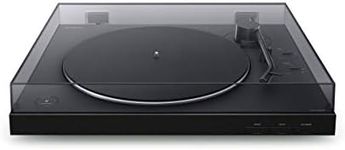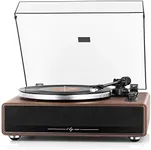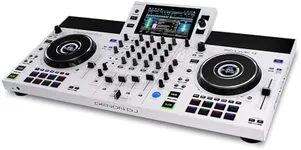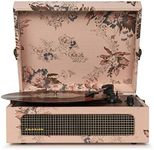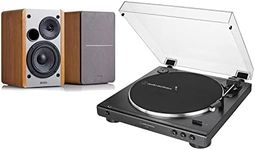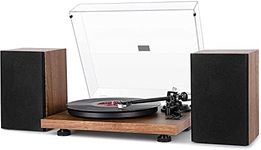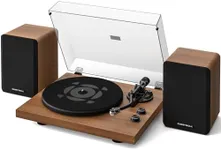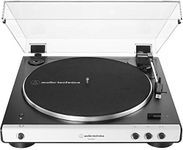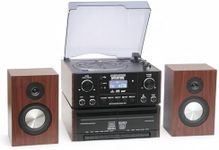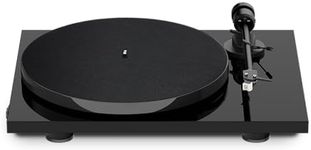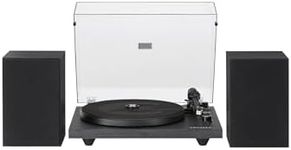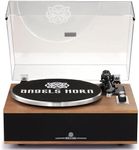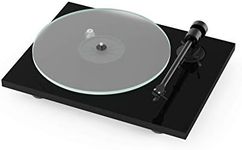Buying Guide for the Best Turntables With Speakers
Choosing the right turntable with speakers can be a delightful journey into the world of vinyl records. Whether you're a seasoned audiophile or a newcomer to the vinyl scene, understanding the key specifications will help you make an informed decision. The right turntable will not only play your records but also enhance your listening experience. Here are the key specs to consider and how to navigate them.Drive TypeThe drive type refers to how the turntable's platter is powered. There are two main types: belt-drive and direct-drive. Belt-drive turntables use an elastic belt to spin the platter, which helps reduce motor noise and vibration, making them ideal for home listening. Direct-drive turntables have the motor directly connected to the platter, offering more consistent speed and durability, which is preferred by DJs. If you plan to use the turntable for casual listening, a belt-drive might be best. For more active use, like DJing, a direct-drive is recommended.
Built-in PreampA built-in preamp amplifies the signal from the turntable to a level that can be used by speakers or other audio equipment. This is important because vinyl records produce a very low signal that needs amplification. Turntables with built-in preamps are convenient and easy to set up, especially for beginners. If you already have an external preamp or a receiver with a phono input, you might not need this feature. Choose a turntable with a built-in preamp if you want a straightforward, plug-and-play setup.
Speakers QualityThe quality of the built-in speakers can greatly affect your listening experience. Look for speakers that offer clear, balanced sound with good bass and treble. Some turntables come with detachable speakers, which can be upgraded later. If you are an audiophile or plan to use the turntable as your main music system, investing in a model with high-quality speakers is crucial. For casual listening, standard built-in speakers might suffice.
Speed SettingsTurntables typically offer different speed settings to accommodate various types of records. The most common speeds are 33 1/3 RPM for LPs and 45 RPM for singles. Some turntables also support 78 RPM for older records. This spec is important because playing a record at the wrong speed can distort the sound. Ensure the turntable you choose supports the speeds of the records you own or plan to buy. For most users, a turntable with 33 1/3 and 45 RPM settings will be sufficient.
Cartridge and StylusThe cartridge and stylus are the components that read the grooves on the record and convert them into audio signals. The quality of these parts can significantly impact sound quality. There are two main types of cartridges: moving magnet (MM) and moving coil (MC). MM cartridges are more common and easier to replace, while MC cartridges are preferred by audiophiles for their superior sound quality. Consider your listening habits and how much you value sound quality when choosing a turntable. For most users, an MM cartridge will be adequate.
Connectivity OptionsModern turntables often come with various connectivity options, such as Bluetooth, USB, and RCA outputs. Bluetooth allows you to connect wirelessly to speakers or headphones, which is convenient for a clutter-free setup. USB connectivity lets you digitize your vinyl collection by connecting the turntable to a computer. RCA outputs are standard for connecting to traditional audio systems. Think about how you plan to use your turntable and choose one with the connectivity options that best suit your needs.
Build QualityThe build quality of a turntable affects its durability and performance. Look for a turntable with a sturdy, well-constructed base (plinth) to minimize vibrations and ensure stable playback. Materials like wood, metal, and high-quality plastics are preferable. A well-built turntable will not only last longer but also provide a better listening experience. If you plan to use your turntable frequently, investing in a model with good build quality is essential.
